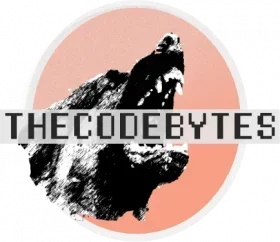So you’re wondering if classes are data structures? Well, this might surprise you but they’re not! In fact, they are pretty much opposites and complementary to each other.
In this article, we are going to explain exactly what a class is in programming and how it differs from a data structure. That way you can better your understanding of the programming world and make yourself a better developer.
What Is A Class In Programming?
Let’s begin by defining what a class is.
A class is a fundamental construct in object-oriented programming that defines the blueprint for related objects. These objects have the ability to store data and programming logic to manipulate that data. In languages like Java, Python, and C#, these objects are called methods.
Here is an example of a class in Python:
class Dog:
def __init__(self, make, model, year):
self.breed= breed
self.age = age
self.name = name
def get_descriptive_name(self):
dog_description = f'Breed: {self.breed} Age: {self.age} Name: {self.name}'
return dog_description
my_dog = Dog('Rottweiler', '4', 'Cali')
print(my_dog .get_descriptive_name())As you can see in this example, we created a class, ‘Dog’ that acted as the blueprint to create our dog objects.
There is technically no data being passed into the Class until the object is created. It is simply implied. This is an important differentiation between a class and a data structure that we will explain a bit later.
What Is A Data Structure In Programming?
Data Structures, on the other hand, are specific types of data organization used for storage and retrieval. This includes things like arrays, linked lists, dictionaries, and trees.
here is a few examples in Python to help you get the idea:
# Data Structure: List
numbers = [1, 2, 3, 4, 5]
print(numbers)
# Data Structure: Dictionary
person = {'name': 'Tom', 'age': 12, 'city': 'Oregon'}
print(person)
# Data Structure: Tree (using a class)
class Node:
def __init__(self, data):
self.left = None
self.right = None
self.data = data
def PrintTree(self):
print(self.data)
root = Node(10)
root.PrintTree()How Do Classes and Data Structures Differ?
Now that you have a clear definition of what a class and a data structure is, we can compare and contrast.
As you can see, Data Structures do not imply data but are ways to structure the data. Hence the name data structure. Classes are simply a way to syntactically group methods and objects.
Classes often lend themselves to being used to implement data structures, such as in the example we used for trees above. However, the class is not the only way you could create a tree. It could be created in alternative ways. Such as with simple functions.
The major difference between classes and data structures is that classes keep data implied, while data structures keep functions implied.
In our example of a class, no data actually existed in order to create the class, it was simply a blueprint to use in the future. However, the data structure implied that a function or class existed before in order to build the data structure.
For that reason, the two complement each other. Classes are a way to build data structures, but are not, itself, a data structure.
